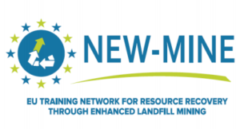Researchers at SIM² KU Leuven and VVSG have investigated the circularity of the household metal packaging cycle in the region of Flanders. They found some remarkable discrepancies between the results of a sorting experiment and reported literature data. The work is published in the Journal Resources, Conservation & Recycling. (PTJ/JvC, Leuven 28/1/2019)
Eurostat data
Belgium and more specifically the Flanders region has a long tradition of separate collection and recycling of household waste. Data provided by Eurostat show that, along with Germany and Austria, Belgium’s waste recycling rates are of the highest of all EU member states. In Flanders, household metal packaging is separately collected together with plastic packaging and drink cartons (“PMD” waste) and, after sorting, delivered to the metal industry for recycling.
As such, in 2015, about 57% or 25,640 tonne of the household metal packaging that was brought on the market, such as steel or aluminum tins, cans and trays, was separately collected in the blue “PMD” waste bag. Yet, a recycling rate of 97.8% was reported, assuming that the remaining 40.8% of household metal packaging was present in scrap metals recovered from waste-to-energy (WtE) bottom ash.
MFA
A material flow analysis based on a limited set of data from waste sorting experiments found in the literature showed that another 16,880 tonne (37%) of household metal packaging should be present in residual household or industrial waste, in public waste bins or in litter that is collected as street cleaning residue. These four waste streams are indeed incinerated in WtE plants and both ferrous and non-ferrous metals are recovered from the remaining bottom ash for further recycling. So the metal packaging they contain should be recovered via this route.
To corroborate this, representative samples were taken from different ferrous and non-ferrous metal scrap fractions recovered from bottom ash in a Flemish WtE plant. Next, the scrap samples were sorted into a household packaging and non-packaging fraction and the relative mass of each fraction was determined by weighing.
Results from these sorting experiments showed that metal scrap recovered from WtE bottom ash consists of about 2 to 11% of household packaging waste, depending on the type and particle size distribution of the scrap fraction.
Combining these percentages with waste and bottom ash mass flows and recovery rates pointed out that, in the best case, only about 4,590 tonne of metal packaging was present in WtE bottom ash, corresponding to about 10% of the mass brought on the market and to only about 27% of the 16,880 tonne that was estimated to be present based on literature data.
Conclusion
This research shows that, to explain this large and unexpected discrepancy between experimental and literature data and to correctly balance the household metal packaging mass flows, it is essential to gather more and accurate information on the composition of the different considered waste and bottom ash flows.
The results of this future research can then form the basis for a method to calculate a realistic household metal packaging recycling rate, which preferably also takes into account sorting and recycling losses.
Full reference paper
J. Van Caneghem, E. De Coster, K. Vandenbergh, S. De Broyer, N. Lambrix, L. Weemaels, Closing the household metal packaging cycle through recovery of scrap from waste-to-energy bottom ash: The case study of Flanders, Resources, Conservation and Recycling, 144, 2019, 115-122 – https://doi.org/10.1016/j.resconrec.2019.01.028
Bio Jo Van Caneghem
 Jo Van Caneghem is associate professor at KU Leuven, TC Material Technology, campus Group T. In her research she uses her chemical engineering background to develop ways to enhance energy and material valorisation in thermal systems. She lectures the courses ‘Environmental technology’, ‘Sustainable energy production’ and ‘Applied sustainability assessment’. Her Research highlights are:
Jo Van Caneghem is associate professor at KU Leuven, TC Material Technology, campus Group T. In her research she uses her chemical engineering background to develop ways to enhance energy and material valorisation in thermal systems. She lectures the courses ‘Environmental technology’, ‘Sustainable energy production’ and ‘Applied sustainability assessment’. Her Research highlights are:
- Sustainable treatment of solid waste containing toxic substances;
- Recovery of critical elements from thermal treatment residues;
- Scaling and corrosion of heat exchanging surfaces in Waste-to-Energy boilers;
- Flue gas cleaning;
- Destruction and formation of POPs in waste incinerators.


